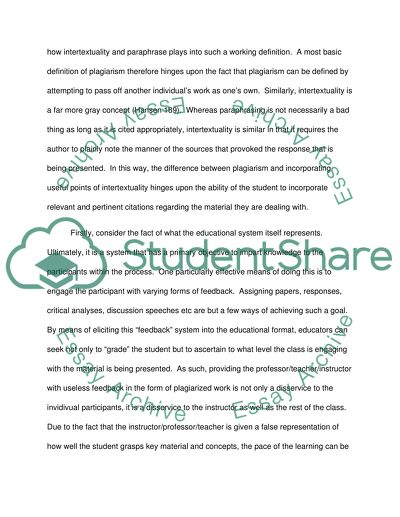Cite this document
(The Problem of Plagiarism Essay Example | Topics and Well Written Essays - 1000 words, n.d.)
The Problem of Plagiarism Essay Example | Topics and Well Written Essays - 1000 words. Retrieved from https://studentshare.org/education/1608313-the-problem-of-plagiarism
The Problem of Plagiarism Essay Example | Topics and Well Written Essays - 1000 words. Retrieved from https://studentshare.org/education/1608313-the-problem-of-plagiarism
(The Problem of Plagiarism Essay Example | Topics and Well Written Essays - 1000 Words)
The Problem of Plagiarism Essay Example | Topics and Well Written Essays - 1000 Words. https://studentshare.org/education/1608313-the-problem-of-plagiarism.
The Problem of Plagiarism Essay Example | Topics and Well Written Essays - 1000 Words. https://studentshare.org/education/1608313-the-problem-of-plagiarism.
“The Problem of Plagiarism Essay Example | Topics and Well Written Essays - 1000 Words”, n.d. https://studentshare.org/education/1608313-the-problem-of-plagiarism.


